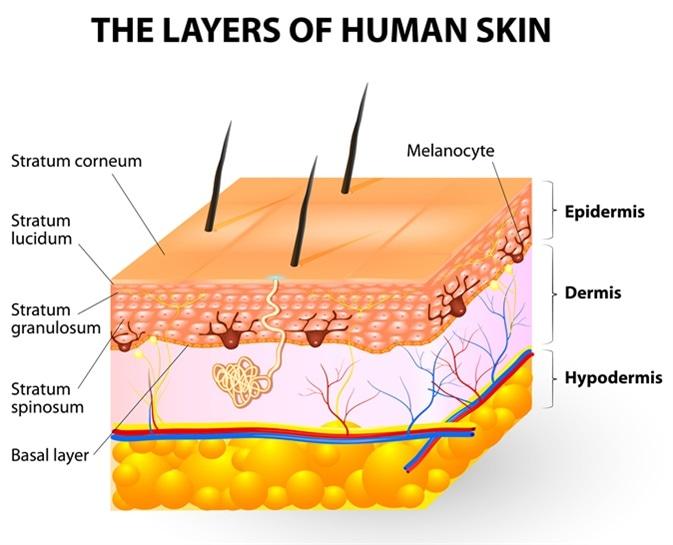A nurse is assisting in identifying clients on the medical surgical floor with skin problems. Which of the following are most likely to become chronic wounds?
Cluster of oral herpes sores
Abdominal surgical incision
Diabetic foot ulcer
Posterior scalp wound
The Correct Answer is C
A. Cluster of oral herpes sores: Oral herpes sores typically heal within a few weeks and do not generally become chronic wounds unless there are complications or underlying immune system issues. They are more acute in nature and tend to resolve without becoming chronic.
B. Abdominal surgical incision: Surgical incisions are designed to heal within a specific timeframe, usually a few weeks to a couple of months, depending on the type of surgery and individual healing factors. While surgical wounds can sometimes have delayed healing or complications, they are not typically categorized as chronic wounds unless they fail to heal or become recurrent over an extended period.
C. Diabetic foot ulcer: Diabetic foot ulcers are highly prone to becoming chronic wounds due to the underlying pathology associated with diabetes, such as neuropathy (nerve damage), peripheral vascular disease (poor circulation), and impaired immune function. These factors can impair the normal healing process, leading to delayed healing, infection, and the potential for the wound to become chronic if not managed appropriately.
D. Posterior scalp wound: Scalp wounds can heal relatively quickly, especially with proper wound care and management. However, certain factors such as the size of the wound, depth, presence of infection, and underlying conditions can influence the likelihood of a scalp wound becoming chronic. In general, scalp wounds are less likely to become chronic compared to wounds in areas with higher risk factors, such as diabetic foot ulcers.
Nursing Test Bank
Naxlex Comprehensive Predictor Exams
Related Questions
Correct Answer is C
Explanation
A. Inform the client that the recovery nurse will instruct them how to manage postoperative pain:
This is an important aspect of postoperative care, but it is typically addressed by the post-anesthesia care unit (PACU) or recovery nurse after surgery rather than in the preoperative education phase. While pain management education is crucial, the focus of preoperative education is usually on what to expect before, during, and immediately after surgery.
B. Remind the client they will return to their room after surgery:
This information is part of the preoperative instructions and helps alleviate anxiety by providing clarity about the post-surgical process. However, it may not be the most critical aspect of preoperative education compared to other options.
C. Provide instructions about how to cough and deep breathe effectively:
This is a key nursing intervention to include in preoperative education. Teaching the client how to cough and deep breathe effectively helps prevent postoperative complications such as atelectasis and pneumonia. These breathing techniques are typically taught preoperatively to ensure the client understands and can perform them correctly after surgery.
D. Notify the client that they will receive a food tray in the recovery room:
While it's important for the client to understand the postoperative diet plan, including any dietary restrictions or instructions, this information is usually provided after surgery rather than in the preoperative education phase.
Correct Answer is B
Explanation
A. Loose connective tissue:
Melanocytes are not typically found in loose connective tissue. Their primary location is within the epidermis, specifically in the basal layer, where they interact with keratinocytes to produce melanin and contribute to skin color. Loose connective tissue contains collagen and elastin fibers, as well as fibroblasts, but it does not house melanocytes.
B. Epidermis:
This is the correct answer. Melanocytes are primarily located in the basal layer of the epidermis, which is the deepest layer of the epidermis. These cells produce melanin, a pigment that helps protect the skin from UV radiation and determines skin color. Melanocytes are interspersed among keratinocytes in the epidermis and transfer melanin to keratinocytes to provide skin pigmentation.
C. Dermis:
The dermis is the layer of skin beneath the epidermis and consists of connective tissue, blood vessels, nerves, hair follicles, and sweat glands. While the dermis plays a crucial role in supporting and nourishing the epidermis, melanocytes are not primarily located in the dermis. They are confined to the basal layer of the epidermis.
D. Superficial fascia:
The superficial fascia, also known as the subcutaneous tissue or hypodermis, lies beneath the dermis and consists of adipose (fat) tissue and connective tissue. It provides insulation, energy storage, and cushioning for underlying structures. However, melanocytes are not typically found in the superficial fascia. They are restricted to the epidermis, specifically the basal layer, where they carry out their function of melanin production.

Whether you are a student looking to ace your exams or a practicing nurse seeking to enhance your expertise , our nursing education contents will empower you with the confidence and competence to make a difference in the lives of patients and become a respected leader in the healthcare field.
Visit Naxlex, invest in your future and unlock endless possibilities with our unparalleled nursing education contents today
Report Wrong Answer on the Current Question
Do you disagree with the answer? If yes, what is your expected answer? Explain.
Kindly be descriptive with the issue you are facing.
